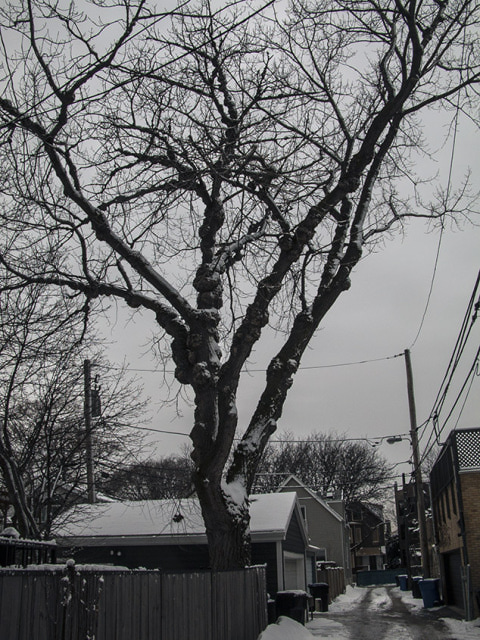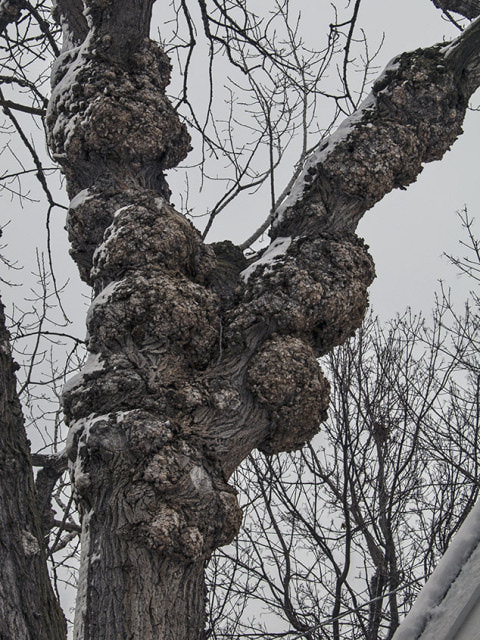Question
 Cottonwood overview
Cottonwood overview  closeup
closeup
Hi Jim
There is an Eastern Cottonwood nearby my home with huge blisters on the bark (see the attached two photos).
Can you tell me what it is? I cannot find anything on Google about this.
Thanks.
Pete
AnswerThese are called crown galls. Crown gall is caused by the soil-borne bacterium, Agrobacterium tumefaciens. This disease is one of the most widely studied of all plant diseases. This gall inducing bacterium enters plants through wounds primarily on lower stems and trunks and roots. Cellular growth is stimulated and galls of varying sizes and shapes are produced in infected plant tissue. Agrobacterium tumefaciens has the largest host range of any bacterial plant pathogen. More than 600 plant species in over 90 plant families are susceptible.
Galls form on stems and roots, especially at the root crown, the area where roots and stem come together. Galls enlarge with host plant growth. Gall formation does not occur in dormant plants. The galls range in size from less than 1/2 inch in diameter to over 8 inches in susceptible, older plants. The size of the galls is influenced by plant species and size and growth rate of the infected plant part. Galls on woody plants are spongy and light colored when young but with age become rough, hard and fissured. Old galls are often sloughed off.
Plants affected most commonly in Arizona include almonds, apples, apricots, cherry, cottonwood, figs, grapes, nectarine, peaches, pears, pecans, plums, privet, pyracantha, roses, and willows.
Crown gall is difficult to manage. The pathogen moves easily to other trees through the use of infected cutting tools and enters the tree through cutting wounds. Cutting tools should be sterilized between cuts. If a cottonwood develops a gall, the tree should be removed and destroyed. After the tree is removed, don't plant another cottonwood on that site for at least five years, as the bacterium can persist in the soil for at least two years without a host, but decaying gall pieces left behind can persist even longer
It can weaken the trunk or branch at the place it is growing and cause breakage. It will not really kill the tree but could cause it to break.







